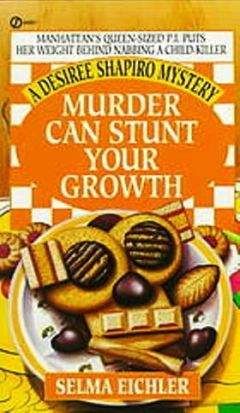Питер Уорд - Новая история происхождения жизни на Земле

Помощь проекту
Новая история происхождения жизни на Земле читать книгу онлайн
47
F. Dyson. Origins of Life, 2nd ed. (Cambridge: Cambridge University Press, 1999), 100.
48
Ник Лэйн — человек точных суждений, который борется с предрассудками. Он хорошо описал сложный вопрос понимания энергии. N. Lane, «Bioenergetic Constraints on the Evolution of Complex Life,» in P. J. Keeling and E. V. Koonin, eds., The Origin and Evolution of Eukaryotes. Cold Spring Harbor Perspectives in Biology (2013).
49
J. Banavar and A. Maritan. «Life on Earth: The Role of Proteins,» J. Barrow and S. Conway Morris, Fitness of the Cosmos for Life (Cambridge: Cambridge University Press, 2007), 225–55.
50
E. Schneider and D. Sagan. Into the Cool: Energy Flow, Thermodynamics, and Life (Chicago, IL: University of Chicago Press, 2005).
51
Dr. D. R. Williams. Viking Mission to Mars, NASA. 18 декабря, 2006.
52
www.space.com-18803-viking.
53
ntrs.nasa.gov-archive-nasa-casi.ntrs.nasa.gov-19740026174.pdf. Также: R. Navarro-Gonzales et al., «Reanalysis of the Viking Results Suggests Perchlorate and Organics at Midlatitudes on Mars,» Journal of Geophysical Research 115 (2010).
54
P. Rincon, «Oldest Evidence of Photosynthesis,» BBC. com, December 17, 2003 and S. J. Mojzsis et al., «Evidence for Life on Earth Before 3,800 Million Years Ago,» Nature 384 (1996): 55–59; M. Schidlowski, «A 3,800-Million-Year-Old Record of Life from Carbon in Sedimentary Rocks,» Nature 333 (1988): 313–18; M. Schidlowski et al., «Carbon Isotope Geochemistry of the 3. 7 x 100-Yr-Old Isua Sediments, West Greenland: Implications for the Archaean Carbon and Oxygen Cycles,» Geochimica et Cosmochimica Acta 43 (1979): 189–99.
55
K. Maher and D. Stevenson. «Impact Frustration of the Origin of Life,» Nature 331 (1988): 612–14.
56
R. Dalton. «Fresh Study Questions Oldest Traces of Life in Akilia Rock,» Nature 429 (2004): 688. Данное исследование продолжается: Papineau et al., «Ancient Graphite in the Eoarchean Quartz-Pyroxene Rocks from Akilia in Southern West Greenland I: Petrographic and Spectroscopic Characterization,» Geochimica et Cosmochimica Acta 74, no. 20 (2010): 5862–83.
57
J. W. Schopf, «Microfossils of the Early Archean Apex Chert: New Evidence of the Antiquity of Life,» Science 260, no. 5108 (1993): 640–46.
58
M. D. Brasier et al., «Questioning the Evidence for Earths Oldest Fossils,» Nature 416 (2002): 76–81.
59
D. Wacey et al., «Microfossils of Sulphur-Metabolizing Cells in 3 4-Billion-Year-Old Rocks of Western Australia,» Nature Geoscience 4 (2011): 698–702.
60
M. D. Brasier, Secret Chambers: The Inside Story of Cells and Complex Life (New York: Oxford University Press, 2012), 298.
61
«Ancient Earth May Have Smelled Like Rotten Eggs,» Talk of the Nation, National Public Radio, 3 мая, 2013.
62
www.nasa.gov-mission_pages-msl-#.U4Izyxa9yxo.
63
www.abc.net.au-science-articles-2011–08–22–3299027.htm.
64
J. Haldane, What Is Life? (New York: Boni and Gaer, 1947), 53.
65
L. Orgel, The Origins of Life: Molecules and Natural Selection (Hoboken, NJ: John Wiley and Sons, 1973).
66
J. A. Baross and J. W. Deming, «Growth at High Temperatures: Isolation and Taxonomy, Physiology, and Ecology,» in The Microbiology of Deep-sea Hydrothermal Vents, D. M. Karl, ed., (Boca Raton: CRC Press, 1995), 169–217, и E. Stueken et al., «Did Life Originate in a Global Chemical Reactor?» Geobiology 11, no. 2 (2013); K. O. Stetter, «Extremophiles and Their Adaptation to Hot Environments,» FEES Letters 452, nos. 1–2 (1999): 22–25. K. O. Stetter, «Hyperthermophilic Microorganisms,» in Astrobiology: The Quest for the Conditions of Life, G. Homeckand, C. Baumstark-Khan, eds. (Berlin: Springer, 2002), 169–84.
67
Y. Shen and R. Buick, «The Antiquity of Microbial Sulfate Reduction.» Earth Science Reviews 64 (2004): 243–272.
68
S. A. Benner, «Understanding Nucleic Acids Using Synthetic Chemistry,» Accounts of Chemical Research 37, no. 10 (2004): 784–97; S. A. Benner, «Phosphates, DNA, and the Search for Nonterrean life: A Second Generation Model for Genetic Molecules,» Bioorganic Chemistry 30, no. 1 (2002): 62–80.
69
G. Wachtershauser, «Origin of Life: Life as We Don’t Know It,» Science, 289, no. 5483 (2000): 1307–08; G. Wachtershauser, «Evolution of the First Metabolic Cycles,» Proceedings of the National Academy of Sciences 87, no. 1 (1990): 200–204; El. Wachtershauser, «On the Chemistry and Evolution of the Pioneer Organism,» Chemistry 6-Biodiversity 4, no, 4 (2007): 584–602.
70
N. Lane, Life Ascending: The Ten Great Inventions of Evolution (New York: W. W. Norton & Company, 2009).
71
W. Martin and M. J. Russell, «On the Origin of Biochemistry at an Alkaline Hydrothermal Vent,» Philosophical Transactions of the Royal Society B: Biological Sciences 362, no. 1486 (2007); 1887–925.
72
C. R. Woese, «Bacterial Evolution,» Microbiological Reviews 51, no. 2 (1987); 221–71; C. R. Woese, «Interpreting the Universal Phylogenetic Tree,» Proceedings of the National Academy of Sciences 97 (2000); 8392–96.
73
S. A. Benner and D. Hutter, «Phosphates, DNA, and the Search for Nonterrean Life: A Second Generation Model for Genetic Molecules,» Bioorganic Chemistry 30 (2002): 62–80; S. Benner et al., «Is There a Common Chemical Model for Life in the Universe?» Current Opinion in Chemical Biology 8, no. 6 (2004): 672–89.
74
A. Lazcano, «What Is Life? A Brief Historical Overview,» Chemistry and. Biodiversity 5, no. 4 (2007); 1–15.
75
B. P. Weiss et al., «A Low Temperature Transfer of ALH84 001 from Mars to Earth,» Science 290, no. 5492, (2000): 791–95. J. L. Kirschvink and B. P. Weiss, «Mars, Panspermia, and the Origin of Life: Where Did It All Begin?» Palaeontologia Electronica 4, no. 2 (2001): 8–15. J. L. Kirschvink et al., «Boron, Ribose, and a Martian Origin for Terrestrial Life,» Geochimica et Cosmochimica Acta 70, no. 18 (2006): A320.
76
C. McKay, «An Origin of Life on Mars,» Cold Spring Harbor Perspectives in Biology 2, no. 4 (2010). J. Kirschvink et al., «Mars, Panspermia, and die Origin of Life: Where Did It All Begin?» Palaeolontogia Electronica 4, no. 2 (2002): 8–15.
77
D. Deamer, First Life: Discovering the Connections Between Stars, Cells, and How Life Began (Oakland: University of California Press, 2012), 286. Также новая статья нашего друга Ника Лэйна: N. Lane and W. F. Martin, «The Origin of Membrane Bioenergetics,» Cell 151, no. 7 (2012): 1406–16.
78
www.nobelprize.org-mediaplayer-index.php?id=1218
79
J. Raymond and D. Segre, «The Effect of Oxygen on Biochemical Networks and the Evolution of Complex Life,» Science 311 (2006): 1764–67.
80
J. F. Kasting and S. Ono, «Palaeoclimates: The first Two Billion Years,» Philosophical Transactions of the Royal Society Biological Sciences 361 (2006): 917–29.
81
P. Cloud, «Paleoecological Significance of Banded-Iron Formation,» Economic Geology 68 (1973): 1135–43.
82
R. E. Kopp and J. L. Kirschvink, «The Identification and Biogeochemical Interpretation of Fossil Magnetotactic Bacteria,» Earth-Science Reviews 86 (2008): 42–61.
83
J. L. Kirschvink et al., «Paleoproterozoic Snowball Earth: Extreme Climatic and Geochemical Global Change and Its Biological Consequences,» Proceedings of the National Academy of Sciences 97 (2000): 1400–1405.
84
J. L. Kirschvink and R. E. Kopp, «Paleoproterozic Ice Houses and the Evolution of Oxygen-Mediating Enzymes: The Case for a Late Origin of Photosystem-II,» Philosophical Transactions of the Royal Society of London, Series B 363, no. 1504 (2008): 2755–65.
85
H. D. Holland, «Early Proterozoic Atmospheric Change,» in S. Bengtson, ed., Early Life on Earth (New York Columbia University Press, 1994), 237–44.
86
D. T. Johnston et al., «Anoxygenie Photosynthesis Modulated Proterozoic Oxygen and Sustained Earths Middle Age,» Proceedings of the National Academy of Sciences 106, no. 40 (2009), 16 925-29.
87
A. El Albani et al., «Large Colonial Organisms with Coordinated Growth in Oxygenated Environments 2.1 Gyr Ago,» Nature 466, no. 7302 (2002): 100–104.2; www.sciencedaily.com-releases-2010–06-100630171711.htm.
88
D. E. Canfield et al., «Oxygen Dynamics in the Aftermath of the Great Oxidation of Earth’s Atmosphere,» Proceedings of the National Academy of Sciences, no. 422 (2013).
89
A. H. Knoll, Life on a Young Planet: The First Three Billion Years of Evolution on Earth (Princeton: Princeton University Press, 2003).
90
P. F. Hoffman et al., «A Neoproterozoic Snowball Earth,» Science 281, no, 5381 (1998): 1342–46; F. A. Macdonald et al., «Calibrating the Cryogenian,» Science, 327, no. 5970 (2010): 1241–43.
91
B. Shen et al., «The Avalon Explosion: Evolution of Ediacara Morphospace,» Science 319 no. 5859 (2008): 81–84; G. M. Narbonne, «The Ediacara Biota: A Terminal Neoproterozoic Experiment in the Evolution of Life,» Geological Society of America 8, no. 2 (1998): 1–6; S. Xiao and M. Laflamme, «On the Eve of Animal Radiation: Phylogeny, Ecology and Evolution of the Ediacara Biota,» Trends in Ecology and Evolution 24, no. 1 (2009): 31–40.
92
От другого названия этого периода — вендский. — Примеч. пер.
93
R. C. Sprigg, «Early Cambrian „jellyfishes“ of Ediacara, South Australia and Mount John, Kimberly District, Western Australia,» Transactions of the Royal Society of South Australia 73 (1947): 72–99.
94
R. Sprigg, «On the 1946 Discovery of the Precambrian Ediacaran Fossil Fauna in South Australia,» Earth Sciences History 7 (1988): 46–51.
95
S. Turner and P. Vickers-Rich, «Sprigg, Martin F. Glaessner, Maiy Wade and the Ediacaran Fauna,» Отрывок для IGCP, Prato Workshop, Monash University Centre, 30–31 августа, 2004.
96
M. F. Glaessner, «Precambrian Animals,» Scientific American 204, no. 3 (1961): 72–78.
97
Южно-Австралийский музей; ископаемые эдиакарского периода, www.samuseumn.sa.gov.au/explore/museum-galleries/ediacaran-fossils.
























